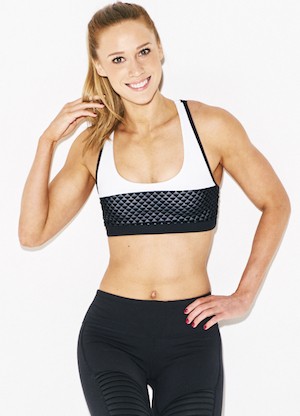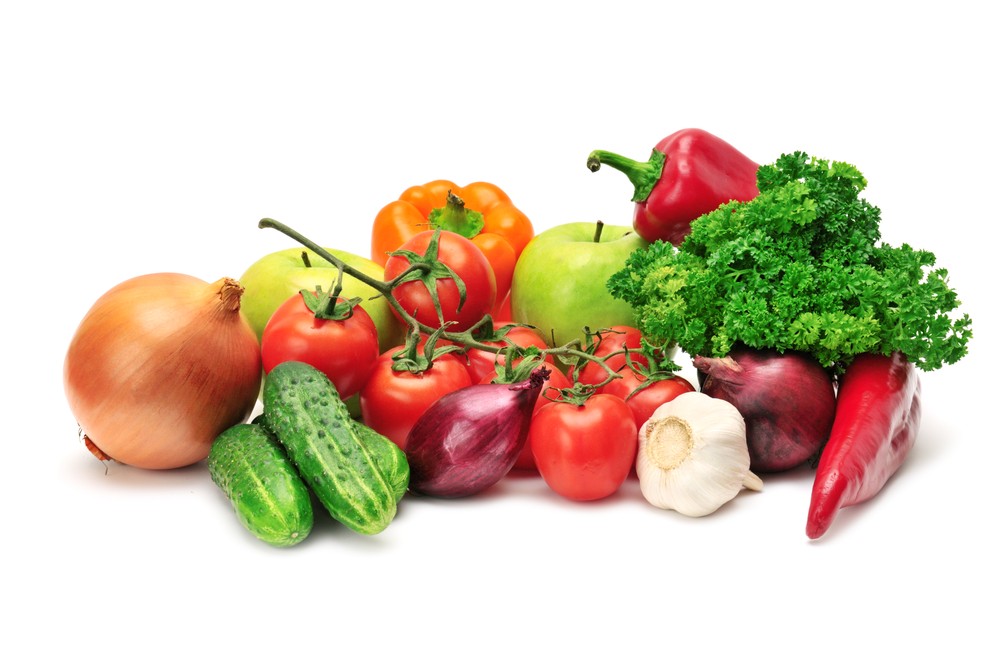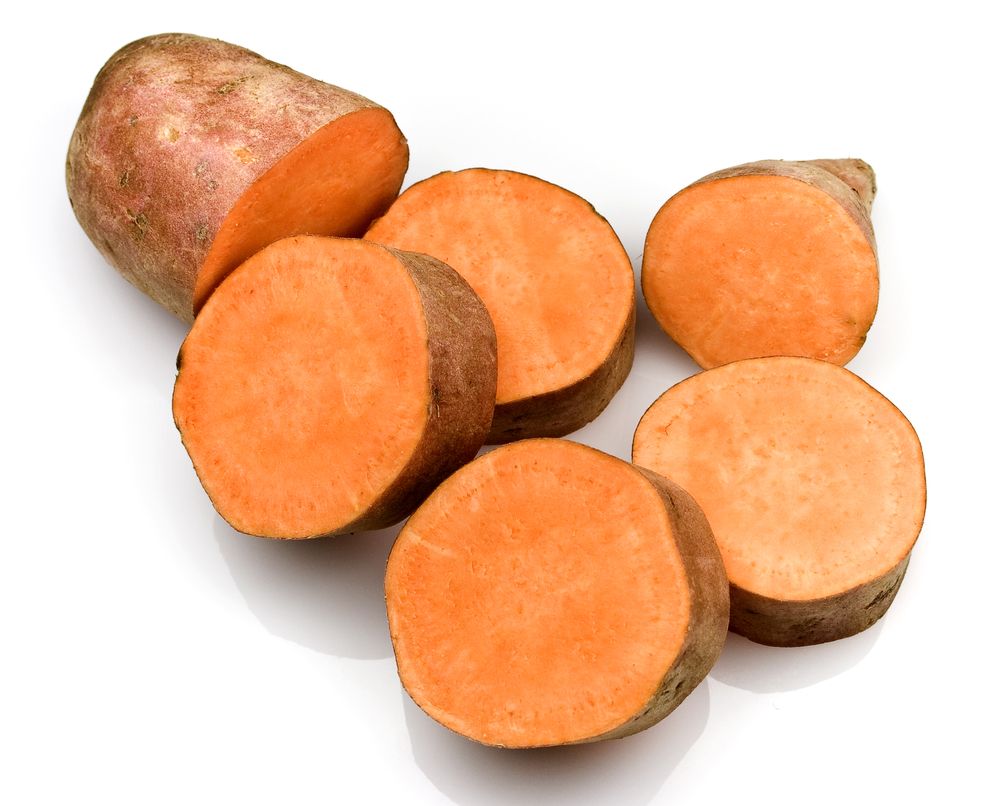
Top 5 Hottest Diets For 2018...
BY KELSEY HEENAN, HIITBURN.com

Each year, it seems like we are always introduced to new diet plans that say they are better for weight loss, fat loss, overall health, etc.
And this year was no different. You've probably seen several different diets pop up this year, some new and some that have been around for years. Diets like Keto, Paleo, Vegan, Carb Cycling, Primal, Low Carb, Whole30, among many others...
And while it may be easy to get confused as to what might be best for you, I am here to break down the top 5 hottest diets of 2018. So here's my research based take on each one of these diets...
The Ketogenic Diet (Keto)

What Is It: The Ketogenic Diet is an approach in which you stay extremely low in carbohydrates (about 5% of your calories), moderate in protein, and very high in fats - with the goal of putting your body in a state of ketosis. Ketosis, as some research suggests, helps your body to burn fat for fuel because of the lack of glucose (which you get from carbs).
Meals on the Ketogenic diet are largely based around high fat foods including butter, cheese, cream, oil, nuts, seeds, avocados, etc. You then add in meats like chicken, beef, fish, and eggs and low carb vegetables (mainly leafy greens). Like I mentioned earlier, carbs stay extremely low on the Ketogenic Diet which is why they'll tell you to avoid starchy vegetables, complex carbs like potatoes, sweet potatoes, rice, etc., fruit, yogurts, and any type of sugar.
The Good: I do love that the Ketogenic Diet calls for very high quality foods. This includes lots of high quality meats, lots of vegetables (many plans have you include in each meal), and healthy fats.
The Bad: I'm not a fan of strict diets because they are very difficult to stick to... And cutting out entire an food group (in this case, carbs) can make it super difficult to stick with for more than a few weeks. Not only that, many people complain of the "keto-flu" during the first few days that bring symptoms like headaches and low energy. Personally, I want to follow something that is enjoyable. And cutting out my favorite carbs like fruit, sweet potatoes, and rice just doesn't sound like the best way to go...
Final Verdict: Personally, I don't ever recommend cutting out entire food groups from your diet (unless it's for medical reasons). In the case of the Ketogenic Diet, although it's focused around high quality foods, it basically has you cutting out all carbs which is not only extremely difficult... It can cause problems for many people. I've found there are better options when trying to get results long term (not to mention more enjoyable).
Paleo

What Is It: The Paleo diet can be summed up as eating real food that has been available for thousands of years. Examples include grass fed meats, fish, eggs, fresh fruits and veggies, nuts and seeds, healthy oils such as coconut oil, olive oil, avocado oil, among others. Depending on what Paleo source you are looking at, you can include select carbs as well (mainly carbs like yams, fruits, and more starchy veggies).
The Paleo Diet makes a lot of sense, because our bodies have thrived on these foods for thousands of years. And whenever you focus on eating REAL, one-ingredient foods, you are going to start feeling better and see your body transform.
The Good: I LOVE that Paleo is based around REAL FOOD. This is one of the principles that we follow here at HiitBurn and our readers love that. Personally, the majority of the foods I eat are considered Paleo since they are real, one ingredient foods. So that's a huge plus!
The Bad: There is no single "Paleo Diet" out there. As I was doing my research, there were tons of variations that I came across which made things pretty confusing. Many Paleo diets cut out foods that I personally believe can help increase results and help form a more enjoyable diet plan. Not only that, some variations add in foods and ingredients that aren't the best for you.
Final Verdict: This was a tough one because it really depends on the Paleo plan that you are following. If there is one takeaway from the Paleo Diet, it would be to focus on REAL FOODS. Period.
Vegan
What Is It: The Vegan Diet seems to gain popularity every now and again, and 2017 was one of those years it gained popularity. In short, the Vegan Diet can be described as not eating animal products. That means no beef, chicken, eggs, cheese, dairy, etc. Instead, Vegans tend to focus on eating lots of fruits and vegetables, nuts, seeds,. Basically anything that doesn't contain ingredients that come from animals.
Like I mentioned previously, cutting out entire foods groups can be extremely difficult, so cutting out all animal products makes for quite the challenge. On top of that, much of the research I came across on the Vegan Diet really cherry picked the studies making them questionable at best. On top of that, much of what I read used "scare tactics" for why you shouldn't eat animal products. Making someone fear food is never a good thing. Food is a necessity, and you don't need to fear it.
The Good: Like Paleo, there are many different versions of the Vegan Diet. The one good thing is MOST Vegan diets include lots of fruits and veggies.
The Bad: Cutting out entire food groups is never a good idea (unless it's for medical reasons). This makes dieting way to strict and just not enjoyable or sustainable long term. Not only that, the Vegan Diet tends to be very high in processed foods that have little to no nutritional value. Fear of food (in this case, animal products) is never a good thing because it can cause you to have a disordered relationship with food. Although there are lots of reasons one may go Vegan, I personally recommend including all major food groups (including high quality, humanely raised animal products) into your diet.
Intermittent Fasting

What Is It: Intermittent Fasting can be defined as an eating pattern where you cycle between periods of eating and periods of not eating (AKA fasting). It's really that simple. Intermittent Fasting isn't a diet in and of itself, because you can follow a wide range of dieting protocols while including Intermittent Fasting.
The reason Intermittent Fasting works is because when you eat, your body will spend the next few hours breaking down that food and use it as energy. And as you already know, your body needs this energy in order to function properly. Now, during the fasted state... Your body doesn't have that readily available energy (i.e. the calories from the foods you eat), so it looks for something else to use as energy. And your body is then more likely to use fat as energy because it's the most readily available.
Even better, Intermittent Fasting can help teach your body to use the food you consume more efficiently and allows you to be a little more flexible with the foods you eat.
The Good: I've followed Intermittent Fasting for just about 2-years now and love it. In fact, I even wrote a book on it. The flexibility in the foods you eat is what I love most about Intermittent Fasting. Because of the smaller eating window, you have more freedom to eat bigger meals and enjoy more of the foods you love.
The Bad: Many of the Intermittent Fasting protocols I have come across are way too strict and call for fasting times that are way too long. This can cause problems for many people, especially women. Not only that, when people are just getting started with Intermittent Fasting, they tend to eat too little which can slow down your metabolism and fat burning. That's why in my book I teach a more flexible approach that is much more enjoyable...
Final Verdict: The right Intermittent Fasting approach can make all the difference for you. I have clients include this when they hit a plateau or are just looking for an extra boost. Many people find that by fasting, you can increase your focus and mental clarity as well. Keep in mind, Intermittent Fasting is an eating protocol, not a diet. So if you want your best results with Intermittent Fasting, make sure you are eating the right foods!
Carb Cycling

What Is It: Carb Cycling has been a hot topic for us this year, and it's starting to gain some serious traction in the media. In short, Carb Cycling is when you alternate between eating days of higher amounts of carbs and days of eating lower amounts of carbs. And as a result, it allows you to burn fat like you are on a low carb diet while still enjoying your favorite high carb foods.
When you Carb Cycle, you are telling your body to burn fat on low carb days, then when you follow that up with a high carb day, your body gets shocked which allows for you to burn fat while maintaining your lean muscle. In short, when you carb cycle, you keep your body at optimal muscle building and fat burning levels.
Plus, Carb Cycling lets you be extremely flexible with the foods you eat and even allows for cheat days each week. It also doesn't require counting or weighing your food which is a huge bonus.
The Good: Carb Cycling is the most simple and flexible diet approach I've ever tried. It allows you enjoy all your favorite high carb foods every single week, and you don't have to worry about counting or weighing. Plus, Carb Cycling is based around YOUR body and goals. So whether you have 20 or more pounds to lose or just want to tone up a bit more, Carb Cycling can help you get there.
The Bad: The one question we always get regarding Carb Cycling is "what Carb Cycle should I start with?"... Luckily, we've figured out how to answer that question with our Carb Cycling Quiz... This will show you exactly where to start with Carb Cycling.
Final Verdict: Carb Cycling is the best diet I've ever tried. It's simple, flexible, brings fast results, and is sustainable long term. It's why I talk about it all the time and recommend it to everyone I talk to!
As you already know, there are plenty of diets to choose from out there. The key is finding the one that works best for YOU. Personally, I follow Carb Cycling as do the thousands of people we work with on a daily basis here at HIITBURN. If your ready to take your results to the next level, click the TAKE THE QUIZ button below and I'll show you exactly where to start...
Content Provided By:

The information provided on this site is for educational purposes only. I am not a doctor and this is not meant to be taken as medical advice. The information provided on this site is based upon my own experiences as well as my own interpretations of the current research that is available. The advice and tips given on this site are meant for healthy adults only. You should consult your physician to insure advice and tips given on this site are appropriate for your individual circumstances. If you have any health issues or pre-existing conditions, please consult your physician before implementing any of the information provided. This product is for informational purposes only and the author does not accept any responsibility for any liabilities or damages, real or perceived, resulting from the use of this information. All rights reserved. No part of this publication may be reproduced, transmitted, transcribed, stored in a retrieval system, or translated into any language, in any form, without the written permission and signature of the author.
Need To Get In Touch?
Email: [email protected]
This site is not a part of the Facebook website or Facebook Inc. Additionally, this site is NOT endorsed by Facebook in any way, shape, or form. FACEBOOK is a trademark of FACEBOOK, Inc.
© 2025 HIITBURN.com | Heenan Enterprises, LLC | All rights Reserved | Privacy Policy | Disclaimer
